在脱碳目标日益明确、利率居高不下的背景下,各行各业的公司都面临着越来越大的脱碳转型压力,然而大多数公司都不愿意承担额外的融资和债务。
With unwavering decarbonisation targets in the midst and high interest rates, companies across industries are under increasing pressure to transition towards decarbonization whilst most companies are unwilling to take on additional financing and debt.
在推动这一转型的过程中,首席财务官和财务部门发挥着关键作用,我们将深入探讨可行的见解和策略,以在不需要私募股权融资或银行贷款的情况下应对融资脱碳倡议的复杂性。从本质上优化您的财务状况,为能源转型倡议提供空间。
CFOs and finance departments play a pivotal role in driving this transition, and we’ll dive into actionable insights and strategies to navigate the complexities of financing decarbonization initiatives without the need for private equity financing or bank loans. In essence, optimising your financial health to provide headroom for energy transition initiatives.
这可以通过以下方式实现:
- 改善财务管理
- 运营资本管理
- 处理冲突的优先事项
- 优化资源配置
This can be done through:
- Improving financial management
- Working Capital Management
- Managing conflicting priorities
- Optimising allocation of resources
- 改善财务管理
- Improving financial management
每位财务总监和财务部门都寻求改善其财务状况,而挑战通常不在于对这些策略的认识,而在于它们的有效实施和优化。
如何在短期财务业绩目标与长期可持续发展目标之间取得平衡,为能源转型留出财务空间,是首席财务官们面临的一项重大挑战。
Every CFO and finance department seeks to improve their financial health and the challenge often lies not in the awareness of these strategies but in their effective implementation and optimization.
To make financial headroom that allows space for energy transitions balancing short-term financial performance objectives with long-term sustainability goals can pose a significant challenge for CFOs.
比率分析和调整
Ratio Analysis and adjustments
虽然内部融资能够带来长期的好处,如节约成本比和提高品牌声誉,但由于短期比率失衡,它也可能影响短期盈利能力。然而,如果将脱碳比率纳入考虑,它将为利益相关者提供解释和跟踪。
While financing the energy transition internally may yield long-term benefits such as cost savings and enhanced brand reputation, it could also impact short-term profitability due to an imbalance in short term ratios. However, if decarbonisation ratios are included it provides an explanation and a tracker for stakeholders.
例如,将碳生产力(每吨碳排放产生的收入)等指标纳入财务分析,可以更全面地了解可持续发展投资对盈利能力的影响。
For instance, integrating metrics like carbon productivity (revenue generated per ton of carbon emissions) into financial analysis provides a more comprehensive view of the impact of sustainability investments on profitability.
案例分析:
通用电气(GE)实施了一项全公司范围的成本削减和效率提升计划,主要针对管理费用、采购成本和运营效率低下等方面。
通过精简流程、重新谈判供应商合同和取消非必要开支,通用电气节省了大量成本。节省下来的部分资金被用于资助可再生能源。这些能效项目在其全球业务中具有特定的碳生产比率,为其脱碳做出了贡献。
Case Study Example:
General Electric (GE) implemented a company-wide cost reduction and efficiency improvement program, targeting areas such as overhead expenses, procurement costs, and operational inefficiencies.
By streamlining processes, renegotiating supplier contracts, and eliminating non-essential spending, GE was able to generate substantial cost savings. A portion of these savings was allocated to funding renewable energy. These energy efficiency projects had specific carbon productivity ratios across its global operations, contributing to its decarbonization efforts.
场景分析:场景分析可用于评估在不同市场条件下各种脱碳方式的潜在财务影响。这种积极主动的方法有助于识别与可持续性投资相关的潜在风险和机会,并为战略决策提供有效信息。
许多中小型企业缺乏编制情景分析的能力,无法将其作为规划过程的一部分,因此可能会造成资金分配的浪费。从观察来看,这一过程不仅有助于达成碳中和的最佳结果,而且还有助于规避经济宏观风险。
Scenario Analysis: Use scenario analysis to assess the potential financial implications of various decarbonization pathways under different market conditions. This proactive approach helps identify potential risks and opportunities associated with sustainability investments and informs strategic decision-making.
Many SMEs lack the capacity to prepare scenario analysis as part of the planning process and can resort to wasteful allocation of capital. From observation, this process not only supports the best possible outcome for carbon neutrality alignment, but it also serves the purpose of navigating economic macro risk.
现金流管理
Cash Flow Management
动态现金流预测:实施动态现金流预测模型,纳入与脱碳项目相关的现金流时间和规模。这样可以更好地预测现金流波动,实现积极的现金管理,确保为可持续发展计划提供充足的资金,同时不影响运营的稳定性。
Dynamic Cash Flow Forecasting: Implement dynamic cash flow forecasting models that incorporate the timing and magnitude of cash flows associated with decarbonization projects. This allows for better anticipation of cash flow fluctuations and enables proactive cash management to ensure adequate funding for sustainability initiatives without compromising operational stability.

- 优化运营资本管理
- Optimizing Working Capital Management
优化运营资本战略:针对脱碳投资的独特性,实施运营资本优化战略。例如,探索利用改善供应商付款条件的机会,为可持续发展项目释放营运资本。
Optimized Working Capital Strategies: Implement working capital optimization strategies tailored to the unique characteristics of decarbonization investments. For example, explore opportunities to leverage improvements in supplier payment terms and unlock working capital for sustainability projects.
案例分析:
宝洁(P&G)通过实施全面的库存优化计划,改善了营运资本管理。通过利用先进的分析和供应链优化技术,宝洁在保持高服务水平的同时降低了过剩库存水平,释放出大量现金储备。
这些释放出的资源随后被分配给可持续发展计划,包括可再生能源项目和旨在减少环境影响的包装创新。
Case Study Example:
Procter & Gamble (P&G) improved its working capital management by implementing a comprehensive inventory optimization program. By leveraging advanced analytics and supply chain optimization techniques, P&G reduced excess inventory levels while maintaining high service levels, freeing up significant cash reserves.
These freed-up resources were then allocated to sustainability initiatives, including renewable energy projects and packaging innovations aimed at reducing environmental impact.
- 处理财务部门冲突的优先事项
- Managing Conflicting Priorities in the Finance Department
财务部门为每个部门做出关键决策,因此不可避免地要讨论预算问题。一种非常有效的方法是积极主动地让利益相关者参与到量化和可衡量的战术计划中。
With finance departments making crucial decisions for every department, there will inevitably be discussions of budgets. A highly effective approach is to proactively engage stakeholders with quantitative and measurable tactical plans.
量化决策框架:制定量化决策框架,在考虑环境和社会因素的同时纳入财务指标,以促进更明智的决策。这包括为不同的标准,如财务回报、环境影响和战略调整等分配权重,以客观地评估投资机会并确定脱碳策略的优先级。
Quantitative Decision Frameworks: Develop quantitative decision frameworks that incorporate financial metrics alongside environmental and social considerations to facilitate more informed decision-making. This involves assigning weights to different criteria, such as financial returns, environmental impact, and strategic alignment, to objectively evaluate investment opportunities and prioritize decarbonization initiatives.
利益相关者参与:积极主动地与内部和外部利益相关者进行互动,使财务优先事项与可持续发展目标保持一致,并促进对脱碳重要性的共同理解。通过征求来自不同角度的意见,财务团队可以更好地应对冲突的优先事项,并就战略性可持续发展投资达成共识。
Stakeholder Engagement: Proactively engage with internal and external stakeholders to align financial priorities with sustainability goals and foster a shared understanding of the importance of decarbonization. By soliciting input from diverse perspectives, finance teams can better navigate conflicting priorities and build consensus around strategic sustainability investments.
与其他部门整合:完善流程并将其与系统和人员相整合非常重要,一个行之有效的方法是利用综合绩效管理系统。实施综合绩效管理系统,获取财务和非财务指标,以跟踪脱碳措施的整体性影响。这包括利用企业资源规划(ERP)系统或专门的可持续发展管理平台,促进跨部门的无缝数据整合和报告。
Integration with Other Departments: It is important that processes are refined and integrated with systems and people. An effective way is utilising Integrated Performance Management Systems. Implement integrated performance management systems that capture both financial and non-financial metrics to track the holistic impact of decarbonization initiatives. This involves leveraging enterprise resource planning (ERP) systems or dedicated sustainability management platforms to facilitate seamless data integration and reporting across departments.
统一激励机制:调整各部门的激励结构,鼓励合作并实现共同的可持续发展目标。考虑将可持续发展指标纳入绩效评估和薪酬计划,以加强脱碳的重要性,推动跨职能部门相协调。通过环境、社会和公司治理驱动因素,激励员工努力实现可持续发展,从而优化资源,释放财务空间。
Incentive Alignment: Align incentive structures across departments to incentivize collaboration and achievement of shared sustainability objectives. Consider incorporating sustainability metrics into performance evaluations and compensation schemes to reinforce the importance of decarbonization and drive cross-functional alignment. With staff being incentivized to work towards sustainability potentially through ESG drivers, it will lead to optimisation of resources, freeing up financial headroom.

- 优化资源配置
- Optimal Allocation of Resources
财务团队经常面临将有限的内部资源在日常运营、增长计划和可持续性投资等竞争性优先事项之间进行战略性分配的挑战。首席财务官可以采用各种策略,在不影响日常运营的情况下释放资源,同时寻找剩余现金储备,为脱碳计划提供资金。
Finance teams often face the challenge of strategically allocating limited internal resources among competing priorities, including day-to-day operations, growth initiatives, and sustainability investments. CFOs can employ various strategies to free up resources without impacting daily operations while simultaneously finding surplus cash reserves to fund decarbonization initiatives.
其中一项战略是资本重新分配和投资组合优化。资本重新配置是指在公司内部转移财务资源,以提高回报或效率。投资组合优化是对投资组合进行战略管理,以在最大限度地降低风险的同时获得最大收益。
One of the strategies is Capital Reallocation and Portfolio Optimization. Capital reallocation involves shifting financial resources within a company to enhance returns or efficiency. Portfolio optimization is the strategic management of investment portfolios to maximize returns while minimizing risk.
案例分析:
联合利华对其资本分配战略进行了全面审查,剥离了非核心资产,并将资本重新分配给高增长和更可持续的业务部门。
通过剥离表现不佳的品牌和环境足迹大的业务,联合利华腾出资金投资于可持续增长领域,如植物基产品、环保包装创新和可再生能源项目。
这种战略性的资本重新分配使联合利华能够同时推动财务和环境绩效表现。
Case Study Example:
Unilever conducted a comprehensive review of its capital allocation strategy, divesting non-core assets and reallocating capital towards higher-growth and more sustainable business segments.
By divesting underperforming brands and businesses with high environmental footprints, Unilever freed up capital to invest in sustainable growth areas, such as plant-based products, eco-friendly packaging innovations, and renewable energy projects.
This strategic reallocation of capital enabled Unilever to drive both financial and environmental performance simultaneously.
结论
Conclusion
首席财务官和财务部门站在这一转型的最前沿,他们的任务是在保障财务健康的同时,驾驭错综复杂的可持续发展计划融资环境。
通过动态现金流预测、优化营运资本管理和定量决策框架等积极的财务管理战略,企业可以在不影响运营稳定性或外部融资的情况下,释放必要的资源,为其能源转型努力提供资金。
将可持续发展指标纳入财务分析,让利益相关者参与有意义的对话,财务团队就能将财务优先事项与长期可持续发展目标结合起来。
此外,通过资本重新分配和投资组合优化等技术来优化资源配置,也为企业提供了一条将财务资源战略性地部署到可持续发展机遇上的途径。
在 CNEUCN,我们专注于为可再生能源公司提供量身定制的业务规划解决方案,帮助他们应对能源转型过程中的复杂问题。我们的顾问团队经验丰富,致力于帮助贵公司优化财务状况,推动可持续增长。请联系我们,进一步了解我们如何为您的脱碳战略提供支持,并推动您的企业走向更加绿色、更加繁荣的未来。让我们共同努力,使可持续发展成为您财务成功的基石。
CFOs and finance departments stand at the forefront of this transition, tasked with navigating the intricate landscape of financing sustainability initiatives while safeguarding financial health.
Through proactive financial management strategies, such as dynamic cash flow forecasting, optimized working capital management, and quantitative decision frameworks, companies can unlock the necessary resources to fund their energy transition endeavours without compromising operational stability or external financing.
Integrating sustainability metrics into financial analysis and engaging stakeholders in meaningful dialogue, finance teams can align financial priorities with long-term sustainability goals.
Furthermore, the optimization of resource allocation through techniques like capital reallocation and portfolio optimization presents an avenue for companies to strategically deploy financial resources towards sustainable growth opportunities.
At CNEUCN, we specialize in providing tailored business planning solutions to renewable-based companies seeking to navigate the complexities of the energy transition. Our team of experienced consultants is dedicated to helping your company optimize its financial health and drive sustainable growth. Contact us to learn more about how we can support your decarbonization efforts and propel your business towards a greener, more prosperous future. Together, let’s make sustainability a cornerstone of your financial success.
如想了解更多碳中和相关内容,请联系: [email protected]
For more information about carbon neutrality, please write to: [email protected]
仲欧脱碳科技有限公司中欧碳中和可持续城市发展平台项目将由为此项目成立的同名私营公司运营,旨在通过聚集各方优势,针对每一个课题制定出量身打造的解决方案,以全面和包容的工作方式为中国和欧洲的碳中和之路添砖加瓦。
仲欧脱碳科技 有限公司该平台将发挥积极和创新的作用,为实现碳中和所需的构想、塑造、设计和实现转型提供服务。
China Europe Carbon Neutral Technology aims to support and substantially contribute to China and Europe path towards carbon neutrality in a holistic and inclusive way by gathering all the stakeholders and creating solutions for each challenge.
China Europe Carbon Neutral Technology will play an active and innovative role in providing services to conceive, shape, design and accomplish the transitions needed to achieve carbon neutrality.
Cover Pic:

